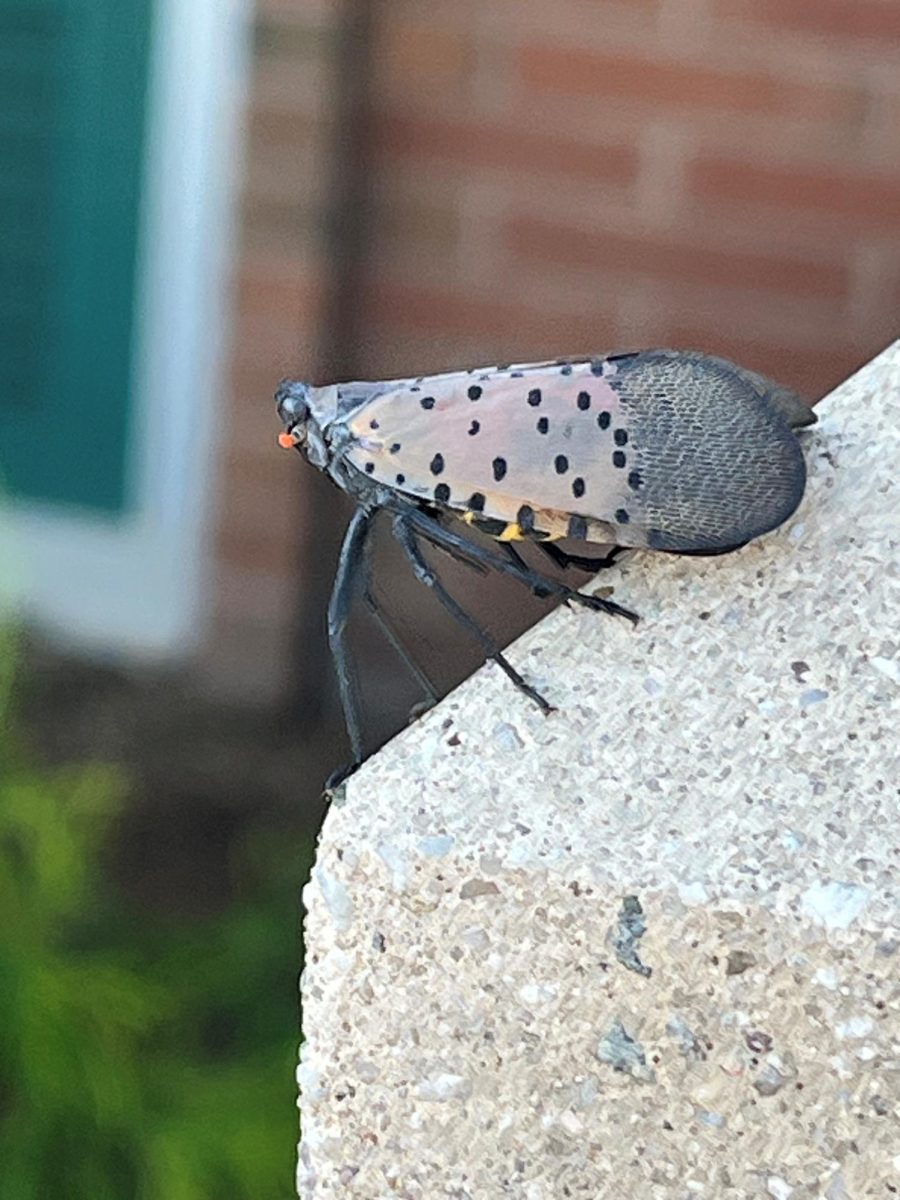If one lived on Long Island this summer, he or she would know what they look like. A bit larger than a fingernail, their gray forewings, or top wings, are interspersed with black dots; when flying, they expose their vivid red and black hindwings. This is the infamous spotted lanternfly (Lycorma delicatula), an invasive species that massively infested Long Island this summer.
Native to China, spotted lanternflies, like many other invasive species, have been exploding in population by thriving off American agriculture and forests. According to the United States Department of Agriculture (USDA) website (usda.gov), lanternflies were first detected in Pennsylvania in September of 2014. Since then, they have been discovered in 13 other states: Connecticut, Delaware, Indiana, Maryland, Massachusetts, Michigan, New Jersey, New York, North Carolina, Ohio, Rhode Island, Virginia, and West Virginia. Transportation and commerce between these states have allowed the lanternflies to spread, being able to move long distances by those who, according to the USDA, “move infested material or items containing egg masses.” Upon arriving at their destination, they begin to feed on a variety of crops and plants, including apples, grapes, hops, walnuts, hardwood trees, ornamental trees, and woody trees. In particular, lanternflies prefer to snack on tree-of-heaven (Ailanthus altissima), an invasive species itself that is also from China. It too has spread across the U.S., being reported in over 30 states as posted on the California Department of Fish and Wildlife’s website (wildlife.ca.gov).
The lanternflies species has lived up to its reputation to go places, being found all over New York State in addition to Long Island. This is a particular threat to the state’s lucrative apple and grape economies; the New York State Department of Agriculture’s website (agriculture.ny.gov) claims more than 30 million bushels of apples are produced annually, accompanied by the $52.8 million earned from yearly grape harvests.
Lanternflies seem unafraid to get close to humans. For many Long Islanders, the beach was a common location to see them this summer. But what is an insect, who primarily likes crops and trees, doing on a sandy beach? Well, as posted on The Philadelphia Inquirer (inquirer.com) website on Sept. 14, Penn State entomology associate researcher Julie Urban said the lanternflies were likely blown onto the beach by the “stubborn westerly land breezes that [had] been plaguing beachgoers” on Long Island and even on the Jersey Shore throughout the summer.
Junior Justin Haberman witnessed the lanternflies’ beach invasion this summer. Estimating the amount he had seen to be in the hundreds, Haberman claimed he had “tried and successfully eliminated” many lanternflies. “They were at the beach a lot and were very annoying by the cabanas and the lockers. Everywhere I looked, I saw another one, and they kept on multiplying,” said Haberman. Declaring the sight of so many lanternflies on her beach walk as “very disturbing,” senior Amelia Doyle also made killing them a habit this summer. She estimates she had seen over 30 on just a mile-and-a-half walk. Junior Abigail Piazza could not enjoy her summer because she was set on finding and killing the species, despite her fear of bugs. In Lynbrook, she has seen about three.
Upon spotting a lanternfly outside New York City, take a photo and collect the sample in a jar, placing it in either a freezer or submerging it in rubbing alcohol or hand sanitizer, according to the New York State Department of Agriculture’s website (agriculture.ny.gov). Afterward, contact Department responders through their website. Any additional lanternflies seen should be killed by stepping on them or crushing them, the site reports.


















